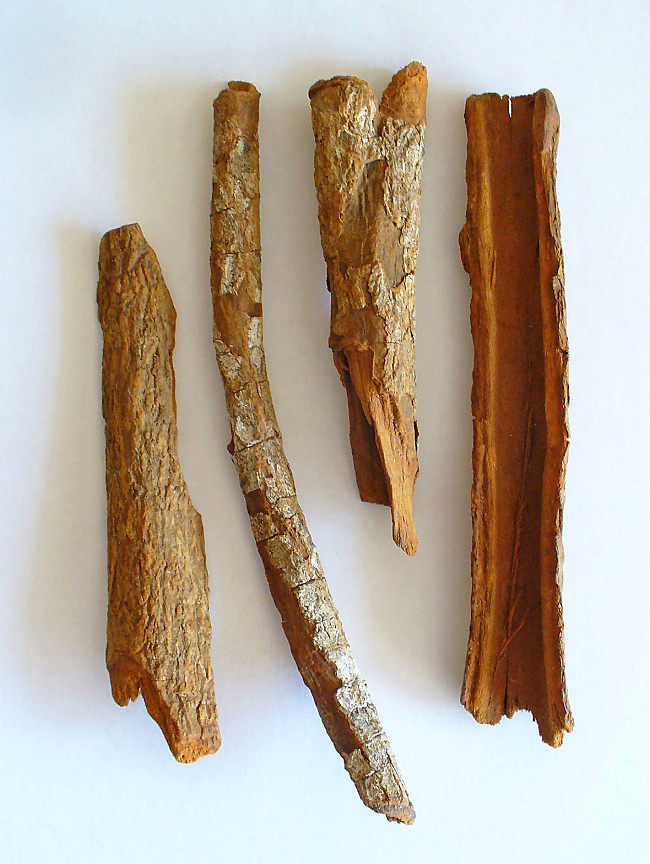Netherlands and investment from antimalarial drugs
Malaria is no longer a strange disease for humans for centuries, although humanity has not been able to eradicate this disease.
Do you know the word malaria (malaria) derived from "bad air" (meaning "poison gas" )? For centuries, it has been suggested that this blood-borne infection caused by mosquito bites is caused by toxic haze from wetlands.
Although it is possible to misunderstand the origin of malaria transmission, people have long understood that this is a very dangerous disease if it is not one of the worst diseases of all time.
Even today, every year malaria affects the health of 300-500 million people worldwide.

The bark of the genus Cinchona on the Andes range contains quinine for malaria - (Photo: HISTORY BLOG).
So what did people do to cure this disease?
Quinine (also known as quinine) is the first medicine to treat malaria that humans discovered. This substance was found forever in the high mountains of the Andes.
There, it was found in the bark of a cinchona genus that contained the molecular type of quinine that later became a medicine that saved countless lives from the death scythe of malaria.
Although the locals have been cooking tea from this bark for many years to heal those who are feverish, how Europeans find this remedy is described very differently.
There is a story about the Spanish Countess of the Chinchón region. She was seriously ill while visiting an area of the Andes. At that time the countess's European doctor did not know what to do, and had to ask the indigenous people to help.
At that time, the local people used the bark of the cinchona genus to cure the countess. Then the miraculous effect of this bark was transmitted to each other and gradually became popular.
Despite the fact that the story happened, the far-flung sound, the miraculous effect of quinine and the need to find a drug capable of treating malaria quickly made it popular, "demand" quickly exceeds "supply".
Governments in many countries in Europe decided to plant trees of the genus cinchona on other continents. However, since the quinine trade has brought too much " profits " to countries in South America, the governments of these countries have banned all export of seeds of the crop.
But also because of the great attraction of profits, the seeds of the cinchona tree were eventually smuggled by the Dutch and the British. However, depending on the cinchona variety, the yield of quinine is also very different.
The amount of quinine collected by the Dutch and the British from the saplings by the seed they obtained was not sufficient to bring about economic efficiency.
During this time, the Dutch paid $ 20 for Bolivian seeds that an Australian botanist obtained. Those seeds have yielded up to 13% of the quinine.
Therefore, the purchase of this quinine seed is considered to be the most profitable investment ever since then the Netherlands has become a growing and supplying quinine for the whole world.
- Extract medicine from wormwood to cure malaria
- Malaria is at risk of outbreaks in Africa due to counterfeit drugs
- New discovery about malaria
- Important findings pave the way for antimalarial drugs
- New method of producing anti-malarial drugs
- Antimalarial resistance has spread
- New drugs prevent malaria effectively
- New way to kill malaria parasites
- Vietnam - Netherlands cooperation on biodiversity
- Anti-malarial anti-cholesterol drugs
- Find an anti-malaria drug that can turn human blood into toxins with mosquitoes
- New breakthrough in malaria treatment
 'Fine laughs' - Scary and painful torture in ancient times
'Fine laughs' - Scary and painful torture in ancient times The sequence of numbers 142857 of the Egyptian pyramids is known as the strangest number in the world - Why?
The sequence of numbers 142857 of the Egyptian pyramids is known as the strangest number in the world - Why? History of the iron
History of the iron What is alum?
What is alum?